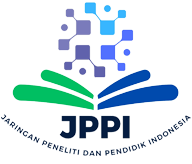Development of Interactive Learning Media Based on Augmented Simulation Using PhET for Magnetic Field Material
DOI:
https://doi.org/10.52434/jpif.v5i1.42588Keywords:
Augmented Simulation, Physics, Learning Media, PhET, Magnetic FieldAbstract
This study aims to develop an interactive learning media based on Augmented Simulation using PhET for magnetic field material, with the goal of enhancing students' understanding of physics concepts that are difficult to grasp through conventional methods. The research method used is Research and Development (R&D), based on a 4D development model simplified into 3D (Define, Design, Develop). The results show that the developed media can accurately and interactively depict magnetic field phenomena, contributing to improved student understanding. The validation results from media and physics content experts indicate that this media meets curriculum standards and is effective in increasing student engagement. However, some aspects still need improvement, particularly in the functionality of feedback and the development of physics models in the simulation. The implications of this research are significant in the context of technology-based education, given the great potential of Augmented Simulation to enhance students' learning experiences.
References
Ahmad Faudzi, M., Che Cob, Z., Omar, R., Sharudin, S. A., & Ghazali, M. (2023). Investigating the user interface design frameworks of current mobile learning applications: A systematic review. Education Sciences, 13(1), 94.
AlGerafi, M. A. M., Zhou, Y., Oubibi, M., & Wijaya, T. T. (2023). Unlocking the potential: A comprehensive evaluation of augmented reality and virtual reality in education. Electronics, 12(18), 3953.
Alsalhi, N. R., Abdelkader, A. F. I., Ismail, A. A. K. H., Alqatawneh, S., Alqawasmi, A., & Salem, O. (2024). The Effect of Using PhET Interactive Simulations on Academic Achievement of Physics Students in Higher Education Institutions. Educational Sciences: Theory & Practice, 24(1).
Apostolidou, E., & Fokaides, P. A. (2023). Enhancing accessibility: a comprehensive study of current apps for enabling accessibility of disabled individuals in buildings. Buildings, 13(8), 2085.
Arsyad, M., Mujahiddin, M., & Syakhrani, A. W. (2024). The efficiency of using visual learning media in improving the understanding of science concepts in elementary school students. Indonesian Journal of Education (INJOE), 4(3), 775–787.
Assem, H. D., Nartey, L., Appiah, E., & Aidoo, J. K. (2023). A review of students’ academic performance in physics: Attitude, instructional methods, misconceptions and teachers qualification. European Journal of Education and Pedagogy, 4(1), 84–92.
Banda, H. J., & Nzabahimana, J. (2021). Effect of integrating physics education technology simulations on students’ conceptual understanding in physics: A review of literature. Physical review physics education research, 17(2), 23108.
Cai, S., Liu, C., Wang, T., Liu, E., & Liang, J. (2021). Effects of learning physics using Augmented Reality on students’ self‐efficacy and conceptions of learning. British Journal of Educational Technology, 52(1), 235–251.
Childs, E., Mohammad, F., Stevens, L., Burbelo, H., Awoke, A., Rewkowski, N., & Manocha, D. (2023). An overview of enhancing distance learning through emerging augmented and virtual reality technologies. IEEE transactions on visualization and computer graphics.
Dargan, S., Bansal, S., Kumar, M., Mittal, A., & Kumar, K. (2023). Augmented reality: A comprehensive review. Archives of Computational Methods in Engineering, 30(2), 1057–1080.
Daryanes, F., Darmadi, D., Fikri, K., Sayuti, I., Rusandi, M. A., & Situmorang, D. D. B. (2023). The development of articulate storyline interactive learning media based on case methods to train student’s problem-solving ability. Heliyon, 9(4).
Dhar, P., Rocks, T., Samarasinghe, R. M., Stephenson, G., & Smith, C. (2021). Augmented reality in medical education: students’ experiences and learning outcomes. Medical education online, 26(1), 1953953.
Dinata, K. (2022). Digital Storytelling (DST) Media Development in Online Physics Learning Based on Computational Thinking. https://doi.org/10.58249/sjse.v2i02.53
Dita, P. P. S., Utomo, S., & Sekar, D. A. (2021). Implementation of problem based learning (PBL) on interactive learning media. Journal of Technology and Humanities, 2(2), 24–30.
Haryana, M. R. A., Warsono, S., Achjari, D., & Nahartyo, E. (2022). Virtual reality learning media with innovative learning materials to enhance individual learning outcomes based on cognitive load theory. The International Journal of Management Education, 20(3), 100657.
Iniesto, F., Coughlan, T., Lister, K., Devine, P., Freear, N., Greenwood, R., Holmes, W., Kenny, I., McLeod, K., & Tudor, R. (2023). Creating ‘a simple conversation’: Designing a conversational user interface to improve the experience of accessing support for study. ACM Transactions on Accessible Computing, 16(1), 1–29.
Irvani, A. I. (2022). Merancang Media Pembelajaran Berdasarkan Bagaimana Siswa Belajar. Jurnal Pendidikan Fisika dan Sains, 5(1), 1–9. https://doi.org/10.52188/jpfs.v5i1.205
Irvani, A. I., & Warliani, R. (2022). Development of physics demonstration videos on Youtube (PDVY) as physics learning media. Jurnal Pendidikan Fisika Indonesia, 18(1), 1–12. https://doi.org/10.15294/jpfi.v18i1.26723
Kiruki, B. W., & Mutula, S. M. (2021). Accessibility and usability of library websites to students with visual and physical disabilities in public universities in Kenya. International Journal of Knowledge Content Development & Technology, 11(2), 55–75.
Laksmi, N. K. P., Yasa, I. K. A., & Mirayani, K. A. M. (2021). THE USE OF ANIMATION VIDEO AS LEARNING MEDIA FOR YOUNG LEARNERS TO IMPROVE EFL STUDENTS’MOTIVATION IN LEARNING ENGLISH. Lingua, 17(1), 42–52.
Latifi, S., Noroozi, O., & Talaee, E. (2021). Peer feedback or peer feedforward? Enhancing students’ argumentative peer learning processes and outcomes. British Journal of Educational Technology, 52(2), 768–784.
Liando, N. V. F., Tatipang, D. P., Tamboto, G., Poluan, M., & Manuas, M. (2022). Pictures as a learning media in teaching vocabulary. Jurnal Ilmiah Universitas Batanghari Jambi, 22(3), 1944–1949.
Liu, C.-Y., Wu, C.-J., Chiou, G.-L., & Wong, W.-K. (2022). A Tool of Technology-Based Laboratory Enabled Students to Precisely Describe Scientific Phenomena. Journal of Baltic Science Education, 21(3), 495–512.
Lubis, L. H., Febriani, B., Yana, R. F., Azhar, A., & Darajat, M. (2023). The use of learning media and its effect on improving the quality of student learning outcomes. International Journal Of Education, Social Studies, And Management (IJESSM), 3(2), 7–14.
Maharani, D. S., & Fathurrahman, M. (2025). Development of an PBL-Based Augmented Reality Media for Enhanced Social and Natural Science Learning Outcomes in Elementary School Students. Jurnal Pendidikan Progresif, 15(1), 360–374.
McLure, F., Won, M., & Treagust, D. F. (2022). Analysis of students’ diagrams explaining scientific phenomena. Research in Science Education, 52(4), 1225–1241.
Morris, R., Perry, T., & Wardle, L. (2021). Formative assessment and feedback for learning in higher education: A systematic review. Review of Education, 9(3), e3292.
Nguyen, P. N. T., & Power, J. (2024). Online learning readiness in secondary education: validating the Online Learning Readiness Scale and examining the impact role of ICT familiarity. Journal of e-Learning and Knowledge Society, 20(2), 1–8.
Paling, S., Makmur, A., Albar, M., Susetyo, A. M., Putra, Y. W. S., Rajiman, W., Djamilah, S., Suhendi, H. Y., & Irvani, A. I. (2024). Media Pembelajaran Digital. TOHAR MEDIA.
Puspitasari, R., & Mufit, F. (2021). Conditions of learning physics and students’ understanding of the concept of motion during the covid-19 pandemic. Journal of Physics: Conference Series, 1876(1), 12045.
Resbiantoro, G., & Setiani, R. (2022). A Review of Misconception in Physics: The Diagnosis, Causes, and Remediation. Journal of Turkish Science Education, 19(2), 403–427.
Sadidah, A., & Irvani, A. I. (2021). Analisis Penggunaan Simulasi Interaktif dalam Pembelajaran pada Topik Hukum Coulomb. JURNAL Pendidikan dan Ilmu Fisika, 1(2), 69–74. https://doi.org/10.52434/JPIF.V1I2.1508
Scavarelli, A., Arya, A., & Teather, R. J. (2021). Virtual reality and augmented reality in social learning spaces: a literature review. Virtual reality, 25(1), 257–277.
Stenseth, H. V., Steindal, S. A., Solberg, M. T., Ølnes, M. A., Sørensen, A. L., Strandell-Laine, C., Olaussen, C., Farsjø Aure, C., Pedersen, I., & Zlamal, J. (2025). Simulation-based learning supported by technology to enhance critical thinking in nursing students: scoping review. Journal of Medical Internet Research, 27, e58744.
Sulastri, H. P., Irvani, A. I., & Warliani, R. (2024). PENGEMBANGAN MODUL DIGITAL FISIKA BERBASIS PROJECT BASED LEARNING (PjBL) DALAM MENINGKATKAN MINAT BELAJAR PESERTA DIDIK. OPTIKA: Jurnal Pendidikan Fisika, 8(1), 97–111. https://doi.org/10.37478/optika.v8i1.3696
Tai, N.-C. (2023). Applications of augmented reality and virtual reality on computer-assisted teaching for analytical sketching of architectural scene and construction. Journal of Asian Architecture and Building Engineering, 22(3), 1664–1681.
Thakar, V., Thakar, R., & Vyas, P. (2024). Investigation on Understanding the Numeracy Capacity of Intellectual Disabled Students using Enabling Technology Tools: Web Application, AR and UI/UX. Journal of Informatics and Web Engineering, 3(3), 176–189.
Thiagarajan, S. (1974). Instructional development for training teachers of exceptional children: A sourcebook.
Tuma, F. (2021). The use of educational technology for interactive teaching in lectures. Annals of Medicine and Surgery, 62, 231–235.
Ulfa, S., Irvani, A. I., & Warliani, R. (2024). Pengembangan Modul Ajar Fisika Kurikulum Merdeka. Jurnal Pendidikan Fisika dan Sains (JPFS), 7(1), 51–59. https://doi.org/10.52188/jpfs.v7i1.562
Uwambajimana, S., Minani, E., Mollel, A. D., & Nyirahabimana, P. (2023). The impact of using PhET simulation on conceptual understanding of electrostatics within selected secondary schools of Muhanga District, Rwanda. Journal of Mathematics and Science Teacher, 3(2), 1–9.
Yeung, K. L., Carpenter, S. K., & Corral, D. (2021). A comprehensive review of educational technology on objective learning outcomes in academic contexts. Educational psychology review, 1–48.
Yu, Z., Yu, L., Xu, Q., Xu, W., & Wu, P. (2022). Effects of mobile learning technologies and social media tools on student engagement and learning outcomes of English learning. Technology, Pedagogy and Education, 31(3), 381–398.
Zaini, A. W., Susilawati, S., & Astuti, R. N. (2022). Improving student learning outcomes through the development of Videoscribe Sparkol-based learning media. Jurnal At-Tarbiyat: Jurnal Pendidikan Islam, 5(3).
Zarvianti, E., & Sahida, D. (2020). Designing Comics By Using Problem Based Learning (PBL) to Improve Student’s Creative Thinking Skills. International Journal of Social Learning (IJSL), 1(1), 75–88. https://doi.org/10.47134/ijsl.v1i1.8
Zulfiqar, F., Raza, R., Khan, M. O., Arif, M., Alvi, A., & Alam, T. (2023). Augmented reality and its applications in education: A systematic survey. IEEE Access, 11, 143250–143271.
Downloads
Published
Issue
Section
License
Copyright (c) 2025 Nurul Hidayah, Prisilia Talakua, Dede Abdul Azis, Musa Marsel Maipauw

This work is licensed under a Creative Commons Attribution 4.0 International License.

























